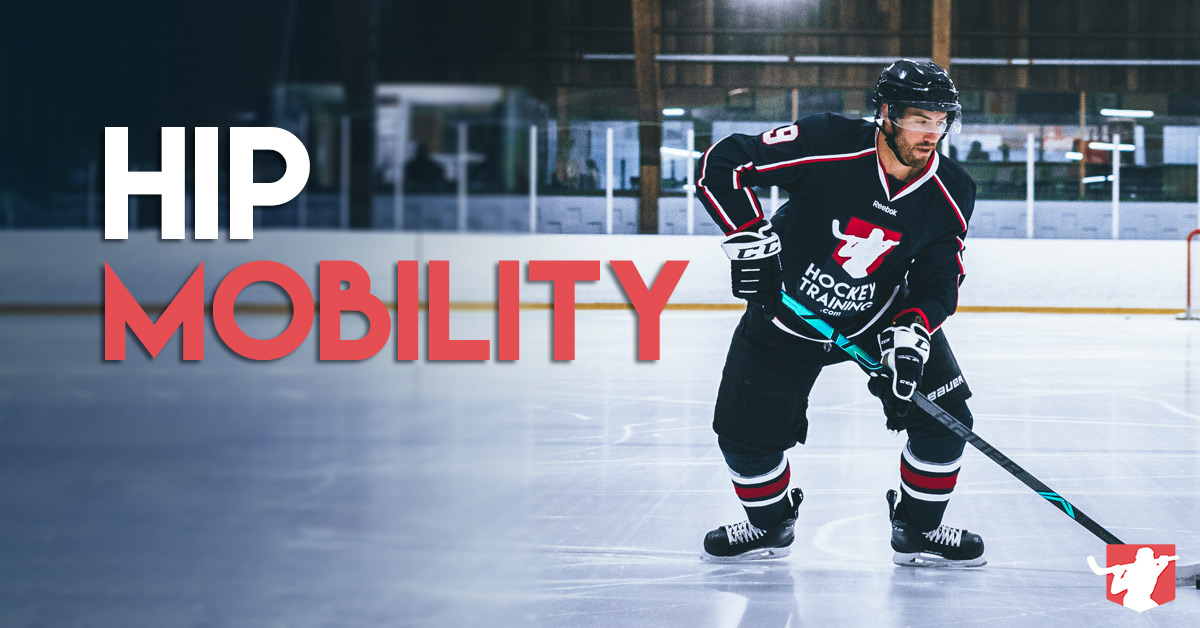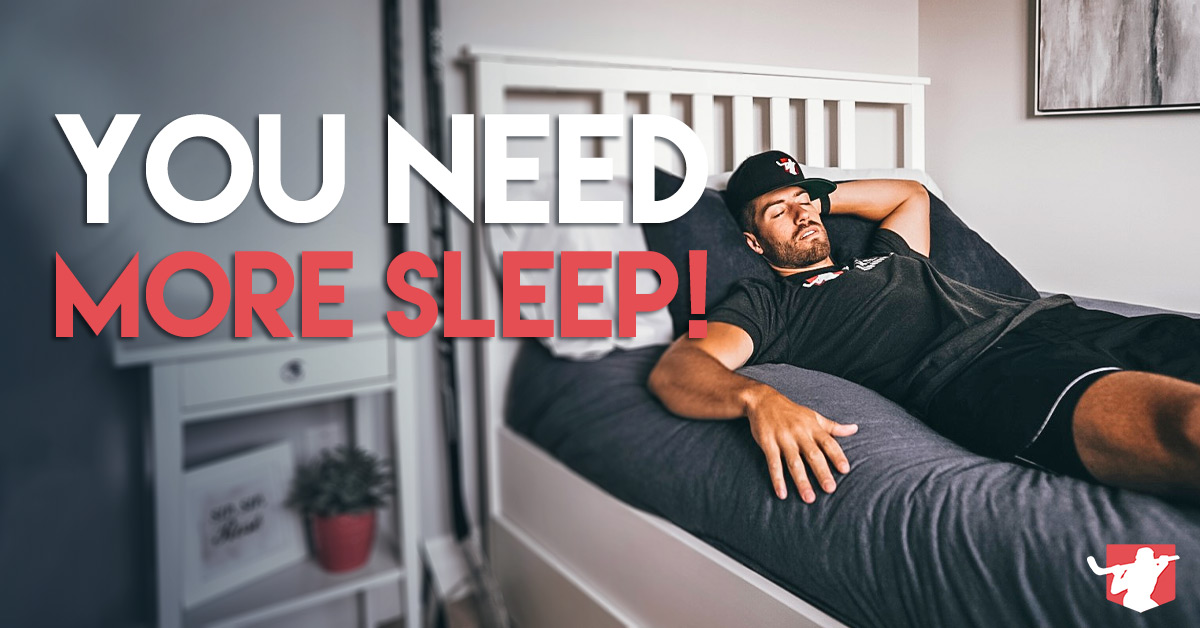In today’s article, I want to give you straightforward answers on all of the most common questions we get here at Hockey Training about what parents and coaches should be doing from a training perspective with their youth athletes.
In modern times, we are well aware that the idea of weight lifting programs for youth athletes was somehow bad or dangerous was complete nonsense. I wrote extensively about the subject here.
We have more than enough literature now to know that these thought processes were never true and we don’t have to worry about things such as stunted growth or inevitable injuries.
Having said this, the safe and sustainable practice of incorporating weight lifting with our youth hockey athletes is not as straight-forward as it is with adults.
Adults can simply go to the gym, throw plates on the bars, add plates to the machine stack, and start firing away without much consequence.
Within this article, I want to point out some of the guidelines you should follow that will take you a long way in keeping the process safe, sustainable, and effective for your kids.
When Can They Start Lifting Weights?
For weightlifting specifically, the age of 12 is the best place I can recommend starting.
Before this age (ages 6-12), I highly recommend utilizing a more bodyweight exercise programming approach such as the extremely popular Youth Hockey Training Program we have here at Hockey Training.
Before 12 years old, children lack the hormonal development to gain the most they can out of weightlifting, and they also generally do not have the attention span or maturity to learn good technique and respect good technique at all times.
Coordination can sometimes be an issue here as well with the little ones, for these reasons and several others, it is likely best to begin incorporating weightlifting around the age of 12.
But, that’s only if they have 1-2 years of bodyweight-only training already under their belt. If a kid has never trained before and he/she is 12 years old, I wouldn’t put them straight into weight training.
They need to earn their way there and build up the strength of their bones, tendons, ligaments, muscles, and overall technical prowess before they are allowed to step foot in a gym.
Also, don’t think you’re “missing out” by doing bodyweight-only training. There are PLENTY of gains to be made in the bodyweight-only training world, and since they learn how to better move their body through space it is also excellent for general athletic development.
Bodyweight training is great, and almost all the best athletes and strongest people in the world didn’t start lifting until their mid-high school years (15-16 years old).
So, you don’t need to be super-eager to get in there. But if you are, 12 is a good starting age.
A Note On Engagement
The kids need to enjoy the process, I cannot articulate how important this is for long term development.
If you force a kid to weight train and they don’t enjoy it, you can ingrain psychological tendencies within an athlete to associate training with having a bad time.
Always remember, youth training is not about building the best athlete in the world today—youth training is about building the foundation so that he/she can be the best athlete in the future.
Getting somebody to hate their training is not the smartest way to do that.
Some kids will love lifting, some kids won’t.
Some kids will love it for the first 15mins, some kids may enjoy a full 30min session.
When youth hockey athletes rebel against training, which will inevitably happen, think about how for some on-ice practices you have to drag them there even though they enjoy their time once they are there.
There are days where they are just going to rebel against whatever you want them to do.
Kicking, screaming, fits, irrational arguments, the whole works!
Your best bet here is to only do as much weightlifting as they think is fun, and no more after that.
Something is always better than nothing, and we are setting excellent habits now for the future that training and exercise isn’t a chore that they hate.
Youth Hockey Athletes Need Technique
I have mentioned this on several podcasts, in several blogs, and in several training program designs for youth athletes… and I’m going to mention it again right here.
The focus of youth training must emphasize the importance of clean technique.
The technique is going to keep them safe and the technique is going to stick with them into their later stages of life doing off-ice hockey training.
Beyond this, good technique is hard to unlearn… but so is bad technique.
If you pick up bad habits in your youth, they can be tough to change later in life.
Should My Kid Be Maxing Out In The Gym?
Even though it has been demonstrated safe under controlled conditions within the scientific literature on youth training, I do not ever recommend doing a 1-Rep Max strength test with youth athletes.
Beyond this, I don’t even recommend they go to failure on any of their weightlifting or bodyweight training sets.
This means no maxing out, no drop sets, no failing, no forced reps, etc. we want strict technique for sets of 10-15 almost always.
This is an excellent rep range because it will help build muscle, it builds work capacity, and the high number of reps per set really allows you to ingrain that perfect technique into their movement.
How Can I Reward Good Behavior For Added Motivation?
A very simple recommendation here, it is much more positive and effective to reward a youth athlete on their consistency (showing up) and their technique as opposed to rewarding them for how much weight they can lift.
I would even venture to say that the longer you can go without mentioning the weight on the bar, the better.
This is because by the time they turn into teenagers, their egos will rise and they will want to stack weights on the bar.
But, by this time, you will have already ingrained perfect technique into their bodies so they will be much more prepared and will get much more progress out of what they’re doing once they get older add more weight.
Rewarding for consistency and technique wins the long game here and doesn’t alienate the kids who may currently be weaker than the other kids.
When Should I Add More Weight To An Exercise?
If their technique is perfect and they are banging out 15 reps without any issues (it should look like they could complete a set of 20 or more, even though they are stopping at 15), you can increase the weight a very small fraction and go from there.
Children develop very rapidly and you can expect linear strength progression throughout the youth training programs we offer here at Hockey Training, but, add weight very slowly and never compromise technique.
What Exercises are OK for Youth Hockey Players?
All bodyweight exercises, sled push/pull variations, and sprints are excellent options for what would be considered non-weightlifting exercise selection.
But, in the weight room, you want to keep things nice and simple at age 12—this means ONLY the compound basic exercises such as squats, deadlifts, rows, presses, and pull-ups.
Nothing fancy here, but I do want to point out that the less machines you use, the better.
Kids need to learn how to move, they need to build their coordination, and they need to be confident moving their body through full and complete ranges of motion.
You can’t do this stuff when you’re sitting down and just applying force to a machine in a guided pattern.
How Often Should My Kid Weight Train?
1-3 times per week is the recommended range here, with 2-3 likely being best.
This is less-often enough per week to not become boring and repetitive, but often enough to create meaningful progress.
Additionally, these weight lifting sessions should have the goal of being complete in 30mins or less. Then, as they progress into their adolescence (14+) you can bump this up to an hour.
A good measure for you to know how often your kid should train is if they’re sore.
Are they?
Then don’t train until they’re healed.
We don’t need to be “pushing through the barriers” at this stage, we save this stuff for later when they are ready/willing/able.
How Hard Should We Train?
You’re not training them like Rocky Balboa, they literally have a lifetime to make progress.
Train light, focus on technique, and you shouldn’t be aiming to get your kid overly sore.
If you’re a parent who goes overboard here, you are doing more harm than good.
When Is It Safe to Get Serious?
Ideally, you can start turning up the notch and introduce “adult” style training methods between the ages of 15-16.
The big caveat here though, this depends very largely on the unique context of the athlete in question. To make things simple, your athlete should:
- Look like they are well into puberty
- Be self-motivated to get better at hockey
- Be mature enough to stay focused and don’t do silly things in the gym (A weightlifting gym can be a very dangerous environment if you think things, like tapping on the bar or slapping your friends back while they’re squatting, is funny)
Essentially, chronological age doesn’t always represent biological age (some hit puberty way before others), and chronological age always doesn’t always represent certain levels of mental and emotional maturity.
My advice to you would be… If you look at a kid and you still have your doubts, you should give it some more time instead of testing them out.
Final Thoughts
I hope the above points helped clarify some of the most pressing questions you had about youth training.
It’s important we have these conversations because unfortunately in modern times marketing is taking priority over real science, coaches are selling programs to youth athletes that look like NHL programs and yet this is the last thing they should be doing at this age to safely and effectively develop into an elite hockey player.
If you liked the information here and you want access to a completely done-for-you bodyweight youth hockey training program, check out the Youth Hockey Training program because it contains multiple phases of periodized training guaranteed to make your kid become a better hockey player.










What is your opinion on adding a weight-vest to a 13-year old, who can already do bodyweight exercises for 60 seconds straight for multiple sets with little rest, trying to add explosiveness to his game? If you think it is a good idea, how much weight do you recommend in the vest?
Thank you.
Hey Kris,
I am not a big fan of weighted vests as I’ve seen it throw the mechanics off of peoples technique far too many times (and because of this, add stress to their joints).
A 13 Year under the description your providing should be able to safely lift with resistance, so, I would bypass the weighted vest and go straight to sleds, dumbbells, barbells, and medicine balls.
Thanks, Dan! I enjoy your podcasts, videos,and articles. Keep up the great work!